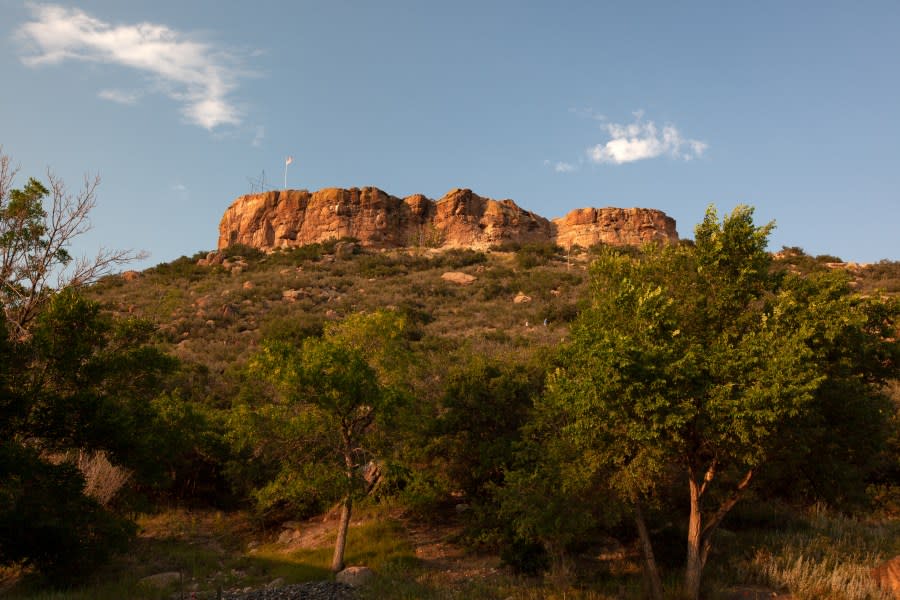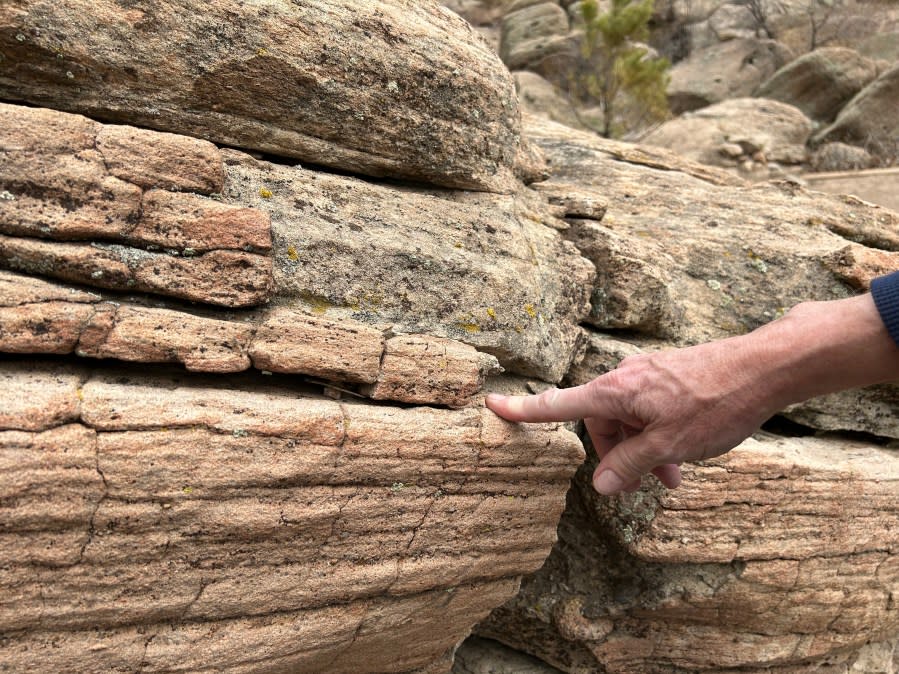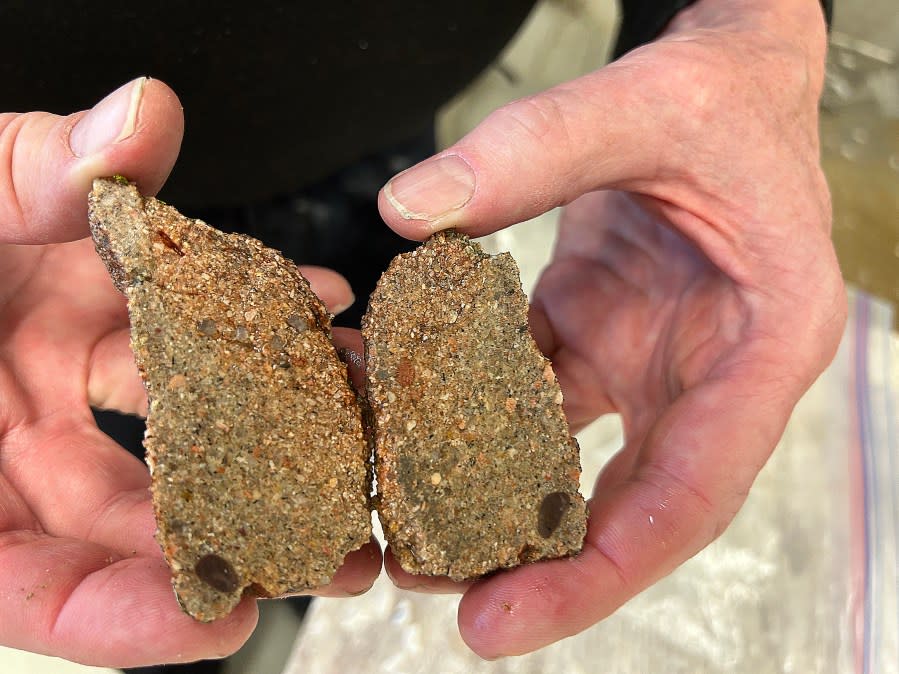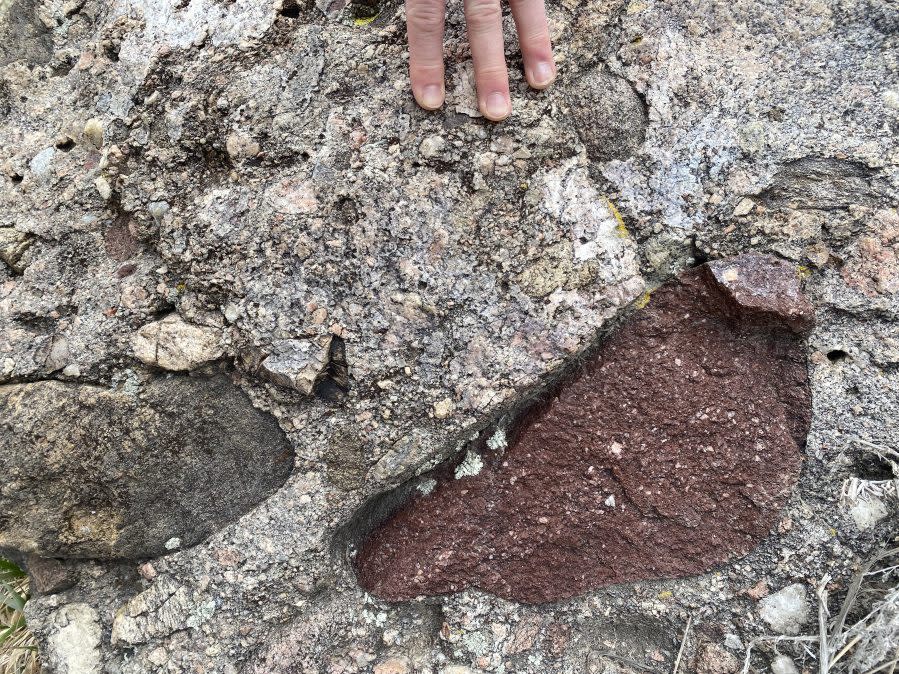Castle Rock’s durability is because of this precious gem

DENVER (KDVR) — It’s hard to miss as you pass through Castle Rock on Interstate 25: a large rock formation towering over the town. And sometimes, a star is lit upon it.
But as other formations begin to erode and cease to exist, Castle Rock’s namesake has kept its shape. What’s up with that?
Mexico claims Louisville art gallery is selling stolen pieces
A study published by the Denver Museum of Nature & Science found that Castle Rock’s prominence and durability are because it has a high opal content.
“Castle Rock and Castlewood Canyon State Park are iconic landmarks in Colorado’s landscape,” Dr. Hagadorn, the museum’s Tim & Kathryn Ryan Curator of Geology, said in a release. “Generally, exposed sedimentary rocks in these areas would be prone to erosion and might crumble into rubble. The key to Castle Rock’s exceptional durability, it turns out, is that it’s held together by a unique and captivating gem mineral, opal.”
A rock formation for which the town of Castle Rock in Colorado is named. The city’s namesake rock formation is seen from the northbound lanes of Interstate 25 Friday, April 24, 2020, in Castle Rock, Colo. Dr. Mark Longman pointing at a layered sandstone in the opal-cemented Castle Rock (Joan Burleson, Denver Museum of Nature and Science) Dr. Mark Longman holding a sliced-open sample of opal-cemented sandstone from Castlewood Canyon State Park. Castle Rock contains exceptionally large grains and clasts, some more than a foot in diameter, that reflect deposition during catastrophic floods about 35 million years ago. Note the fingers for scale.
The combination of opal and agate is how the Castle Rock buttes have withstood the elements for millions of years, according to the study. Usually, rock conglomerates are not the most durable substance and will decompose after a few millennia, but the Castle Rock conglomerates are not the same.
Castle Rock buttes forecast to last for more millennia
Museum Research Associate Dr. Mark Longman was curious about what set the buttes apart. By analyzing “wafer-thin sections” of the conglomerate’s strata on a light microscope to identify the grains and gravel in the rock, he found that every grain of sand or rock in the strata is “encased in a rind of opal and chalcedony,” which is a mineral often known as agate.
Rockslide closes Dillon Dam Road in Summit County
Researchers say the phenomena is likely because of volcanos in the Sawatch Range near Buena Vista that spewed columns of ash and volcanic debris into Colorado’s ecosystem some 36 million years ago. The deposits of ash, glass and rock fragments are cemented with a silica-rich rock known as “wall mountain tuff.” Groundwater then dissolved some of the silica materials and precipitated as opal over time.
The opal-cemented rock formations are visible throughout Castlewood Canyon State Park. The steep walls are full of opal- and chalcedony-cemeted sandstone and conglomerates.
But if you go, remember to leave the rocks there. Rock and mineral collecting in Castlewood Canyon State Park is restricted.
For the latest news, weather, sports, and streaming video, head to FOX31 Denver.






